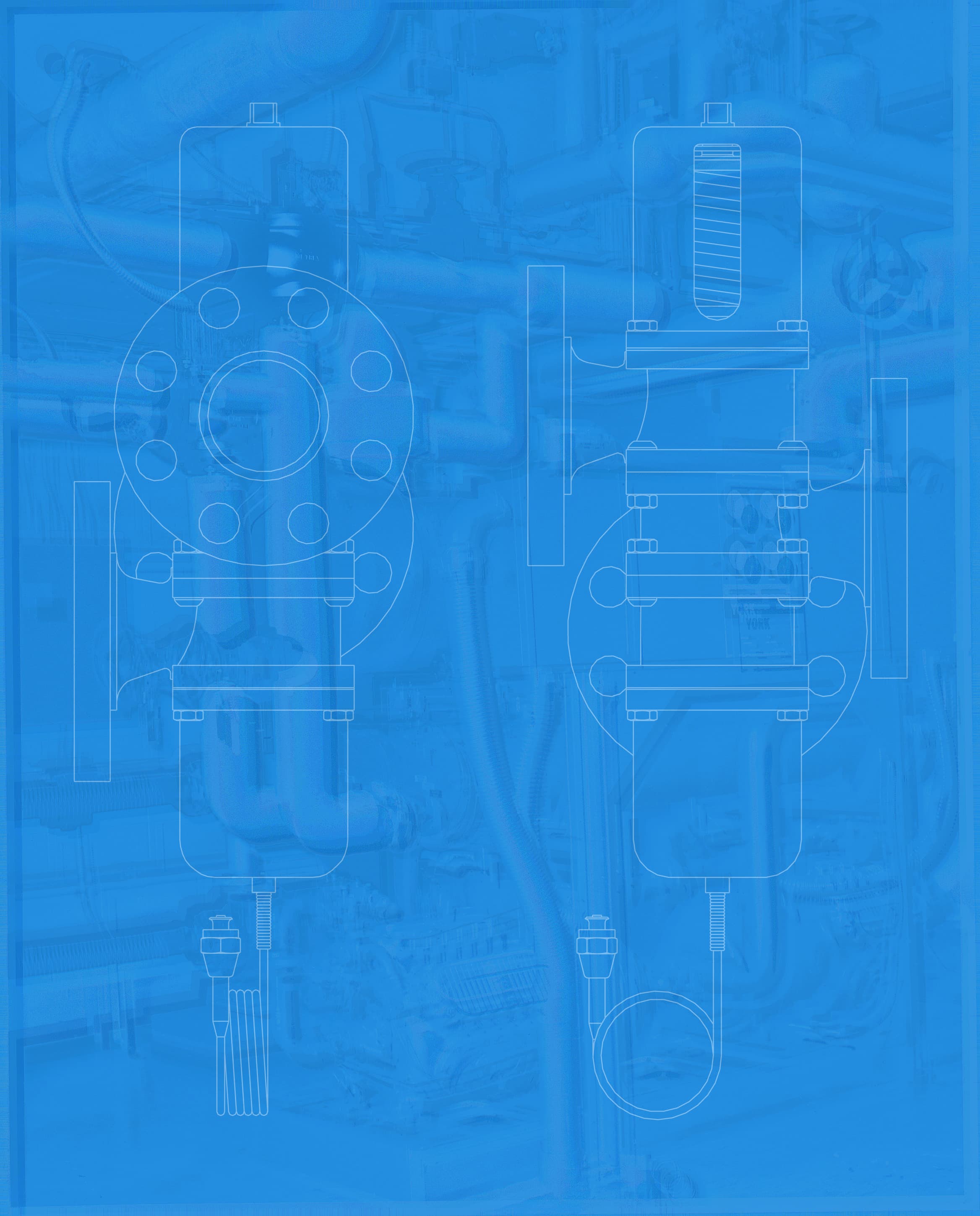See also: Selection grid
Most of the Basic Selection Criteria is straight forward and determined strictly by your application.The other criteria include proper Sizing and whether to use a 2-Way or 3-Way valve. This criteria is discussed in some detail in this below and in further detail in the appropriate Valve Technical Reference Datasheet.
MARINE OR FRESH WATER
Commercial valves are applicable to most fresh water uses including river water. If brackish or sea water is used for cooling or heat exchange a Marine designation is indicated. Consult the Selection Chart on page 14.
2-WAY OR 3-WAY
Although 2-Way valve applications are more economical, there are certain advantages to be obtained from the use of a 3-Way valve, including:
- A constant water supply to cooling tower spray nozzles or distributing pan
- A constant water supply to cooling water pumps preventing cavitation, excessively high pump discharge pressures, pump overheating and possible seal and shaft damage
- A constant flow between supply and return, preventing “dead ending” or changes in supply pressure due to variations in the pump curve
WATER PRESSURE
Most valves are rated for 150 psi water pressure. The High Pressure Valves were designed for high static water pressure in high rise buildings. The High Pressure Valves are rated for 350 PSI and can be tested for higher ratings.
SIZING: FLOW & PRESSURE
Please see Sizing Your Valve.
END CONNECTIONS
Many of the smaller valves offer the option of NPT screw ends (female), ANSI flange or union ends. Larger valves usually have ANSI flange end connections. This information is detailed in the specific Valve Data Sheet.
OPEN ON PRESSURE INCREASE OR REVERSE ACTING
Commercial valves are applicable to most fresh water uses including river water. If brackish or sea water is used for cooling or heat exchange a Marine designation is indicated. Consult the Selection Chart on page 14.
AMMONIA ACTUATION
The commercial valves are compatible with most of the common refrigerants. If ammonia is used, steel or stainless steel actuation components must be used and an “A” suffix designator is indicated.
DIRECT ACTING OR PILOT OPERATED
The question is often answered in the sizing and pressure drop section. Direct acting valves are simpler but are not available in the larger sizes and pilot operated valves require a pressure drop of approximately 5 to 10 PSI, depending on the type and size. The pressure drop requirement can make selection more complex.
ACTUATION BY PRESSURE OR TEMPERATURE
Where refrigerant head pressure must be controlled over a variety of system conditions in a water cooled condenser applications, pressure actuation is indicated. Heat exchange applications usually use temperature actuation.


